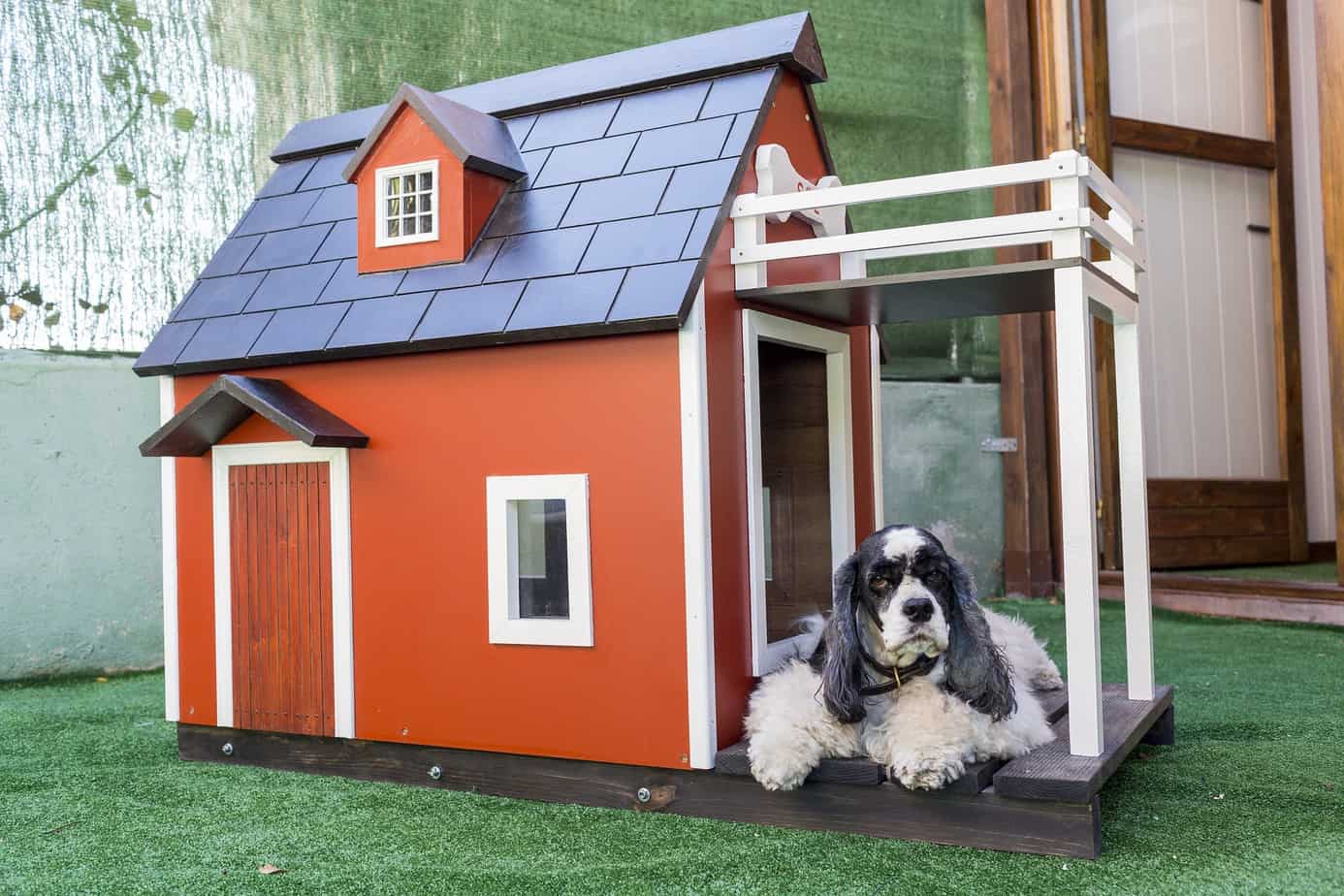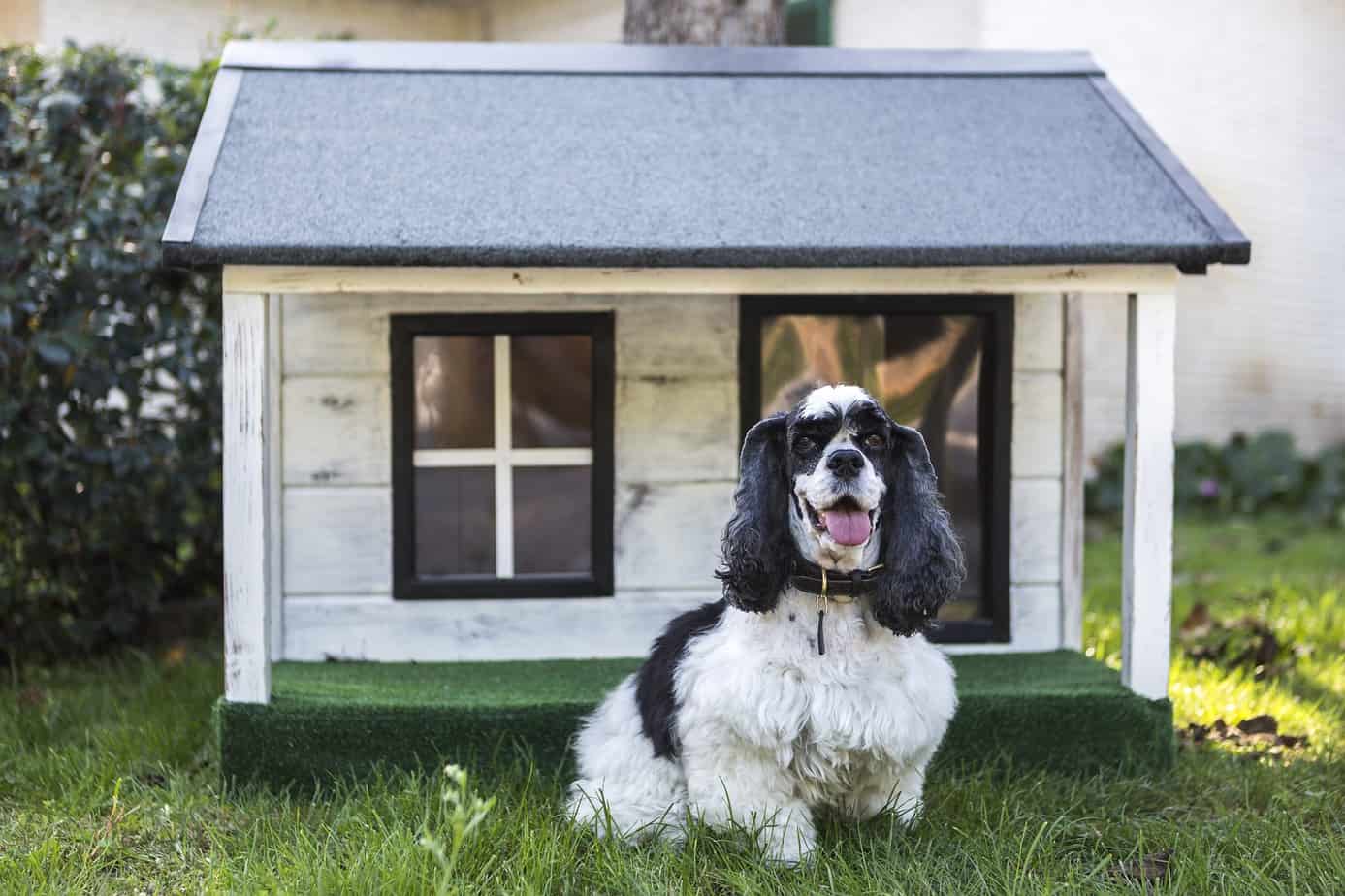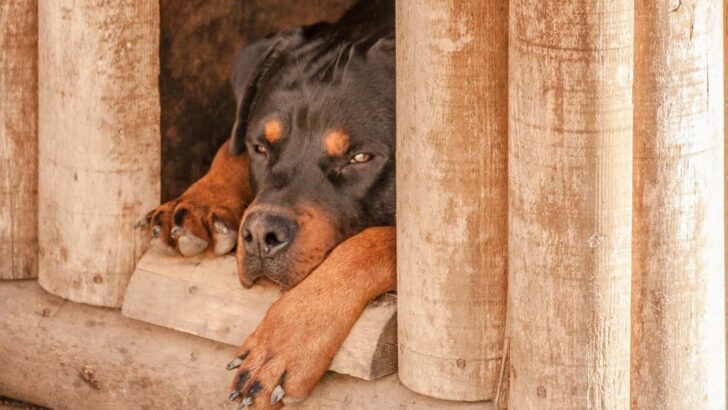- How to Figure Out Your Dog’s Age - January 8, 2022
- Prescription Diet Dog Food Guide and Recommendations - December 12, 2019
- How To Take Care of Your Bichon Frise (Grooming Tips) - December 12, 2019
For those dog parents who already have dog houses and are just looking for an upgrade, then shopping around for a dog house is a cinch. However, if you are a first-time dog house buyer, there are several factors you should consider before stretching out your wallet.
Lifestyle, geographical location, and your relationship with your dog will determine whether buying your pooch a house is a good idea. Most often than not, first-time dog house enthusiasts end up disappointed because they don’t do their homework.
Things You Must Consider Prior to Purchasing a Dog House
- Will my dog be happy in a dog house?
- What size is right for my dog?
- Where to place the dog house.
- Heating, cooling system or insulation?
- What materials are more durable?
- Should I get a warranty?
- Is it a good idea to purchase a dog house online?
- DIY: Building your own dog house
- What breeds make better dog house residents?
Will My Dog Be Happy in a Dog House?
Perhaps the most important question you must ask yourself is how your dog will feel if he/she has lived indoors for most of his/her life? After all, your home is a safe haven for your furry one and it’s also an intimate family community where your dog has already made her/his mark as part of the pack. As such, when your pooch sees the outdoors, he/she associates that environment as playtime, walks or time for a bathroom break. So, when your dog goes from living in a comfortable, large cozy home to living in a dog house, especially if it’s outside, that is a significant disruptive change. It can cause stress or separation anxiety. Chances are it will be close to impossible to train your dog to stay inside the dog house and you will see sad, droopy eyes accompanied by crying to be let in your home.
However, an indoor dog house might be more enticing to puppies, and newborns instead of a crate. In that case, the dog house should be placed in a quiet area. It should also be comfortable and cozy. By putting your puppy’s toys, water bowl, mats, pillows and even a piece of your clothing inside the dog house, you’ll create a snug, secure and maternal environment for your pup. Also, puppies and newborns can be little rascals. In order to keep them inside the house, you need to make sure that door’s bottom opening is 4 to 8 inches higher than the floor. This way, they will have a little wall and they won’t be so enticed to jump out.
What Size Is Right for My Dog?
When picking a dog house, room is one of the most important factors to consider. Most vets, vendors, and facilities recommend the house be large enough for your dog to stand up straight, move around, stretch and lie down. Ease and comfort equate to making sure you have the right size of house for your dog.
To factor this, it is imperative that you measure your dog with a measuring tape.

Measure Your Dog’s Length
Your dog must be able to fit inside the house with plenty of room to move around. In order for this to happen, the interior of the house must have a width and depth greater than your dog’s total length.
- To measure your dog’s total length, take the measuring tape and measure the end of your dog’s nose all the way to the back base of the tail. Make sure not to include the tail itself.
Measure Your Dog’s Height
If you’ve ever been in a compact car too small your head touches the ceiling, then you’ll understand how a dog would feel inside a house too short for him/her. This is why the interior height of the house must be a bit greater than your dog’s standing height.
- To measure your dog’s standing height, make sure your dog is standing tall. Then, take the measuring tape and measure the ground to the top of your dog’s head.
Measure Your Dog’s Shoulder & Chest
Since your dog must enter the dog house via the door, the door is equally important as the house’s interior size. Although most dogs have no problems ducking down to enter their house, other’s love to do the Marmaduke and slam forward towards their destination. This is why both the height and width of the door must be big enough and comfortable for your dog to go in and out regardless of what crazy mood he/she might be in.
- To measure your dog’s shoulder height, measure the ground to the top of your dog’s front shoulder.
- To determine the chest girth, measure from behind your dog’s front legs all the way around the chest.
Where to Place the Dog House
Weather and distance are other major factors to consider when choosing a dog house.
Do not place the doghouse under direct sunlight. This is a very serious mistake that will cause the interior of the house to reach temperatures of over 100 degrees. This temperature is equivalent to the temperature inside a parked car with the windows shut. You would never leave your dog or child inside a heated vehicle. The same principle applies to dogs inside a dog house.
The dog house should be placed in an area that offers both sunlight and shade. This way, your little one will get both a bit of sun and breeze making it the ideal spot to relax in. However, if you live in the path of heavy winds, make sure the door faces opposite the direction of the strong winds, especially in winter. Otherwise, you are risking injury to your pooch.
Heating, Cooling System or Insulation?
It is imperative that you understand how the hot or cold weather will affect the interior of the house.
When dog houses get hot inside, they get humid, sticky and wet making them prone to bacteria, fungus, and viruses. This, in turn, leads to respiratory or skin infections for your dog. Also, although dog’s coats provide insulation during hot and cold weather, this; however, does not mean they can withstand extreme changes in temperature. Your little one gets hot and cold the same way you do and can be extremely painful to him/her.
For example, if you live in a cold region such as New York, Colorado or Minnesota, you’ll need a dog house with an auxiliary heat source and plenty of insulation inside. If the house exceeds 50% of your dog’s height you will compromise the house’s heat retention. This means that the house will be too big and your dog’s body won’t be able to produce enough heat to keep himself/herself warm.
Fortunately, there are many available sources in the dog market to keep your furry one’s house warm or cool. Depending on your budget, you can get creative when heating your dog’s home.
Heating Materials
- A heated kennel mat is a large heating pad you place inside the dog house. The mat can be placed on the ground where your pooch can lay on it and get cozy, or it can be hung on the wall and your dog can lean against it. The drawback to the heated kennel pad is the cord because your dog may chew on it and get electrocuted.
- Heated dog beds are intended to be used inside. Since it only consumes little energy the house will only be heated from 12 to 15 degrees above temperature.These beds are great for older dogs with arthritis or poor circulation. Plus, the removable outer covers are washable. But again, like the heated kennel mat, the cord might be a problem if your furry one loves to chew on things.
- Solar polycarbonate panels can also be built onto a dog house which keeps the house warm during the day. However, when evening comes, your dog will have to rely on his/her body heat to remain warm.
Portable Heater & Air Conditioner
If you plan to put your dog inside a dog house after it’s grown accustomed to being inside, then the Climate Right Portable Heater & Air Conditioner System is one resource that may make transitioning from indoors to the outdoors much easier. Climate Right is currently the only manufacturer that makes and sells mini portable heater and air conditioners that attach to doghouses. When the weather is unbearably hot, your dog will have the air conditioner he/she has been used to; during the cold, snowy winters, the heater will make the house nice and warm. Moreover, the units come with a built-in dehumidifier that prevents mildew and mold from growing inside the dog house.
Some vendors sell dog houses with a built-in fan, air conditioner or heater. However, prices range from the mid $600 to $1700 depending on the size of the house and which model you think is best for your dog:
Insulation
If you don’t live in a region with drastic weather changes, then insulation is the best course. You should purchase a dog house with insulation placed in a hollow wall made of an inner and outer layer. The dead air space in between both layers will prevent moisture from building up and provide comfort for your dog during the winter and summer seasons. Make sure to check the dog house frequently for any signs of insulation coming through the walls. If your dog loves to chew and eat random things, he/she may just swallow the insulation and end up in the ER with an obstructed intestine or worse.
Another addition to insulation is painting the outer layer of the house white or a light color. Cool colors provide the coolest temperature inside the house. And if you live in a region with no cold winters, then large dog houses increase ventilation on really hot days.
What Materials Are More Durable?

In addition to being waterproof, your dog’s house must be free from humidity. Just like kennels, an enclosed stuffy and humid dog house is a Petrie dish to a plethora of illnesses, including but not limited to respiratory diseases like bronchitis, pneumonia or parasitic germs. That’s why animals enclosed in kennels are more prone to disease. It is imperative that the house breathes which is why wood or plastic make the best materials for a dog house.
Wood
- The inside walls of the house should be made from wood coated with epoxy. Epoxy will turn the wood surface hard, durable and resistant to staining, abrasion, and chemicals. That means you will be able to disinfect the surface.
Plastic
- Houses built from double wall thickened plastic are easy to clean and disinfect. They are also more durable.
The following vendors sell a variety of pre-fabricated plastic and wooden houses, including the X-Large Basic Dog House with A/C made by Ricky Lee’s Air Conditioned Dog Houses:
Should I Get a Warranty?
Yes. If you buy a dog house from a merchant, it is always a good idea to purchase the warranty because you want to make sure all the features that came assembled with the house do work.
For example, if the house came with a fan system and it suddenly stops working, you want to make sure the manufacturer repairs the item or replaces it. Some houses with built in air conditioner and/or heater should also offer a warranty. After all, the prices of those houses equate one month’s rent. Therefore, make sure you read all the fine print and buy an extended warranty to protect your investment.
Is It a Good Idea to Purchase a Dog House Online?
In general, the best rule of thumb is this: if the merchant is reputable and well known, then there should be no problem buying the dog house from their website. There are actually some very nice deals out there. However, make sure the merchant has an exchange or return policy in case the house you purchase does not fit your dog. Or, in the event that your dog never lives in the house, you want to know what your options are. It is always a good idea to check reviews and make an assessment based on the medium.
Be wary purchasing a dog house from Craigslist or someone you don’t know. When you buy anything from a stranger, you buy the item as is. That means that if the item is defective, you are out of luck. In the case of dog houses, keep in mind that dog houses can be incubators of bacteria and viruses if not kept insulated and cleaned. You don’t want to risk the health of your best friend for the sake of saving money. After all, you have no idea what type of dog owner the seller is, or if the seller took care of the dog house. Just like a used car, you may end up with a lemon.
DIY: Building Your Own Dog House
If you’re ready to go it alone, there are two great options: ready-to-assemble kits, or building from scratch.
There are many YouTube videos and websites on the internet that show you how to build your own dog house. Below are a few sites and one of the most comprehensible DIY videos:
What Breeds Make Better Dog House Residents?
No matter what the breed or age, no dog should ever be an outside-only dog. That said, some dogs can enjoy long stretches of time outside better than others, and you should keep this in mind when considering how much time you want your pup to spend in their new digs. Elderly dogs, thin dogs, and short hair dogs will have difficult times adapting to spending most of their time outside. Other breeds such as Terriers, Labrador Retriever or English Setters love to run and need an abundance of space to play. Elderly dogs and puppies need care and attention and are more vulnerable to getting sick.
The most important fact is that dogs are very social animals and as such, they thrive on their established relationships. Contrary to what some people believe, dogs have feelings. If you suddenly cut him/her from your life and place your dog in the garden or yard, he/she will go from a social life to one of loneliness. For example, if your furry one spends most of the time with you, lives indoor and has never been kept outside, then your dog will not do well in an outdoor dog house. After all, your dog has had the freedom to move about the house as he/she pleases (or at least the areas you have trained your pooch to stay in). He/she has grown accustomed to a comfy bed or crate, to sleep inside your house, and established his/her routine.
Think about it this way: If you were forced to move from a 3-bedroom house into a tiny studio apartment, you would feel the immediate impact of the lack of space. Chances are it might even take months before you accept your new home and get acclimated to your new life. The same thing happens to dogs because they don’t adapt to change that easy. Dogs are creatures of habit so any drastic change or foreign thing stresses them out.
Perhaps the best advice to leave you with is that dogs, regardless of breed, age or size want to spend time with you. You are his/her family, mom/dad, and soul mate. If you decide to get a dog house, it should be a temporary safe shelter for him/her when you are at work. Under no circumstances should dogs be kept outdoors because you are depriving him/her of the companionship he/she longs. According to Rob Halpin of MSPCA, “Keeping pet dogs outside consigns them to a life of loneliness and frustration”.
When my Harley was 6 years old, her uncle gave her an indoor dog house made of material and velcro. The house was cute and designed to be a sleeping area only. However, no matter how many times I tried to lure her inside the house, she refused to go in. Instead, she gave me the “I don’t think so” look. I never gave it a second thought. After all, my home was her home and I could never see us apart from our daily snuggling. In the end, that little house became her storage for all her toys. I loved watching her go to the house and pulling her toys out to play.
Continue reading:
Best Small Dog Houses for Small Dogs




